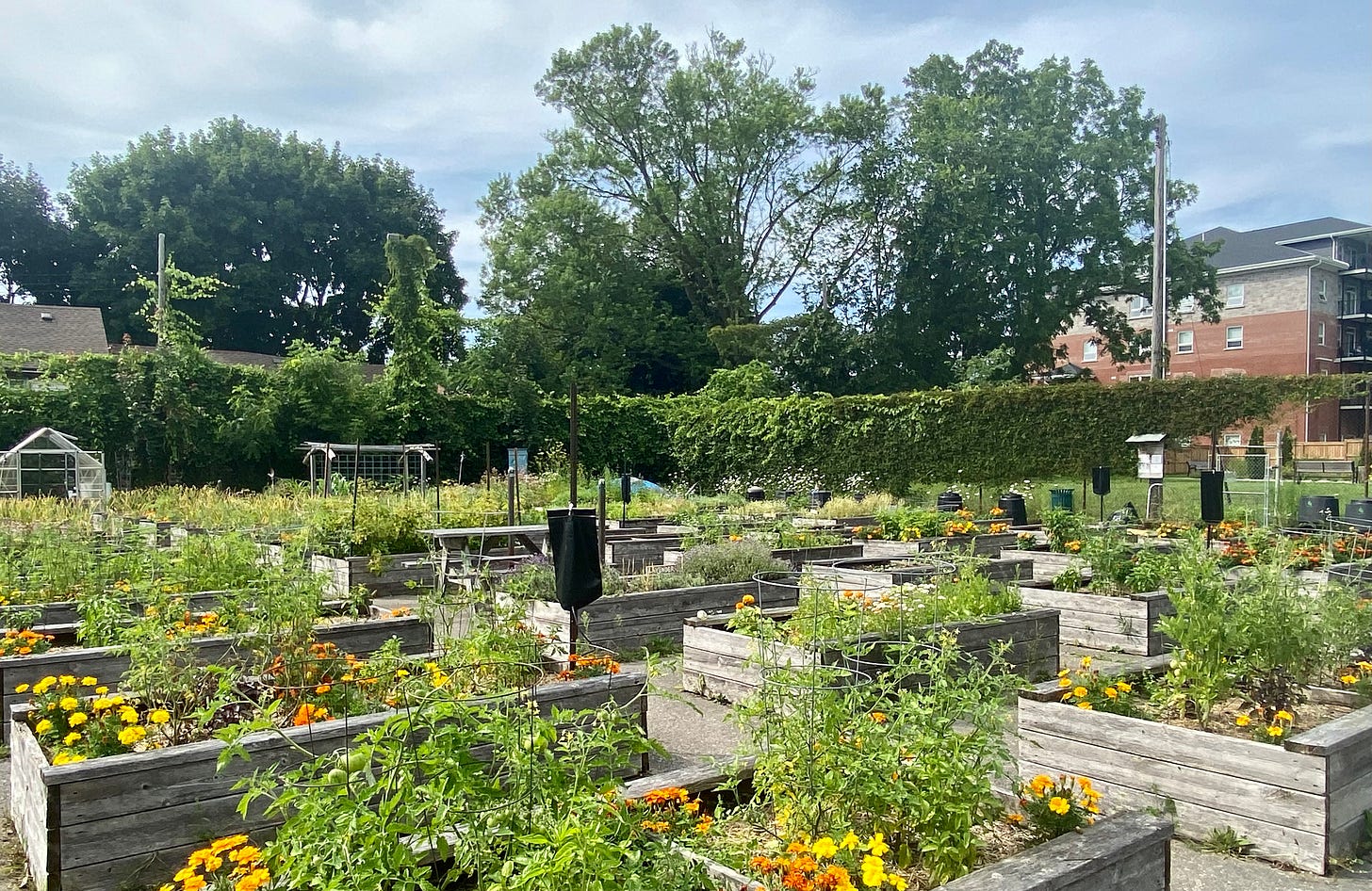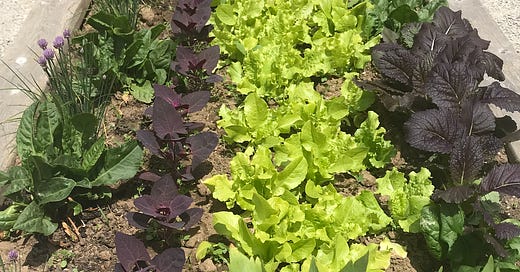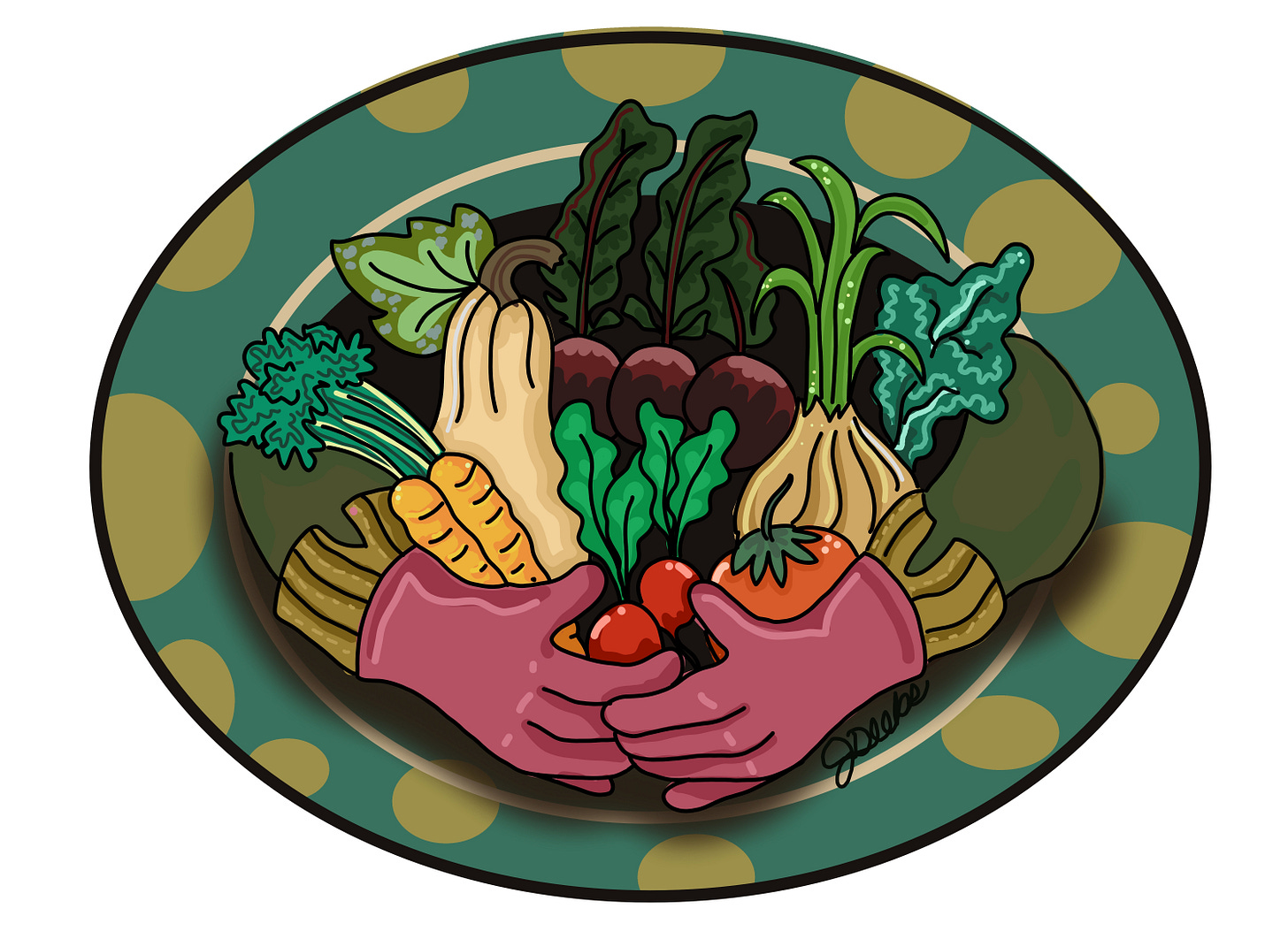Gardening for Food Security Calls for Shared Knowledge & Effort
Growing your own food offers more than savings; it builds skills, connection, and community. Jennifer Deeks reflects on the limits of self-sufficiency and the value of working together.
COMMUNITY CONTRIBUTION
I was at the grocery store recently, where price increases are just something that I anticipate almost every week now. As a frugal shopper and a gardener, I often think about growing more of my own food.
Growing your own produce is something that frequently appears on trendy magazine lists as a way to help offset the rising cost of living. You can definitely grow some food items, but the reality of reducing your dependence on the commercial food system is a lot more complicated.
I have the skills and knowledge, but I would still find it a daunting task to rely on myself for all of my food needs.
The first hurdle is space. The amount of land required to feed one person for a year varies, with estimates of 2 acres to 4.5 acres, depending on the type of diet and the productivity of the land. The average housing lot size in Owen Sound is 0.2 acres, which also includes the space taken up by houses.
There are intensive gardening techniques that can be used to increase yields in small spaces, but you are not likely to be producing enough wheat to make your own flour anytime soon.
Producing food when you depend on it is time-consuming and involves moderate physical labour. If you have any type of physical limitation, it may not be possible to care for a large garden. In an economy that necessitates multiple household incomes, it may be impossible to free up enough labour to also manage food production.
When I grow tomatoes, if I lose a few to pests or disease, it isn’t a big deal. When those tomatoes were meant to feed me through the winter, it suddenly becomes a very big deal, so making the time to care for them is critical.

Our food production systems have evolved to eliminate the need for us to produce food, and they are very good at it. The trade-off is that we’ve lost many of the connections to the land and knowledge that even recent generations would have had.
Even so, there are some foods that offer good value and nutrition, in spite of the challenges.
Start by identifying foods you enjoy.
There is no use in growing a bushel of radishes when you don’t eat them.
Produce that is expensive at the store often includes things that are easily perishable, but not necessarily hard to grow. This includes foods such as lettuce, microgreens, herbs, and spinach. Since they are otherwise relatively easy plants that don’t require a lot of space, these are worth growing at home.
If you want larger quantities for storage, nutrient-dense root crops such as beets, potatoes, and carrots are worth considering. They also store very well for extended periods of time.
Growing food to maintain the knowledge and skills to do so is valuable. Sustainable local food production on a larger scale would likely require tremendous cooperation between neighbours and community groups, but maybe that is something that would be good for all of us to practice, anyway.
And fresh tomatoes would just be a pleasant side effect.
Thank you to sponsors of The Owen Sound Current Writers’ Fund, who make these community contributions possible. Contributions from the community do not necessarily reflect the opinions or beliefs of The Owen Sound Current and its editor or publisher.







